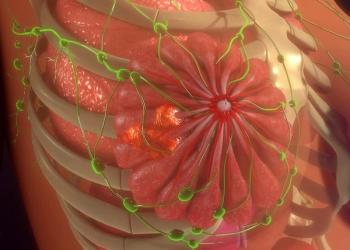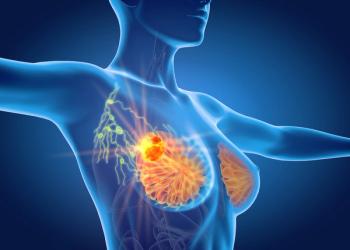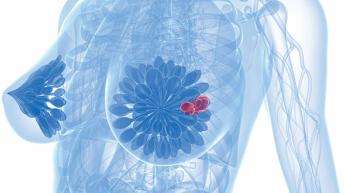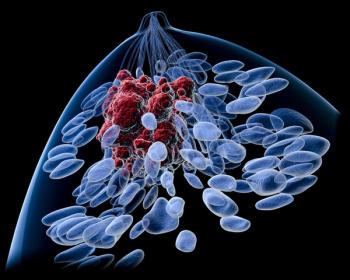
Oncology NEWS International
- Oncology NEWS International Vol 11 No 3
- Volume 11
- Issue 3
Epirubicin/Docetaxel a Superior Combination for Advanced Breast Cancer
SAN ANTONIO-A multicenter phase II study conducted in France has shown that epirubicin (Ellence) and docetaxel (Taxotere) (ET) offer better results as first-line chemotherapy than fluorouracil (5-FU), epirubicin, and cyclophosphamide (FEC) among patients with metastatic breast cancer.
SAN ANTONIOA multicenter phase II study conducted in France has shown that epirubicin (Ellence) and docetaxel (Taxotere) (ET) offer better results as first-line chemotherapy than fluorouracil (5-FU), epirubicin, and cyclophosphamide (FEC) among patients with metastatic breast cancer.
The study was reported by lead researcher Jacques Bonneterre, MD, at the 24th Annual San Antonio Breast Cancer Symposium (abstract 27).
Dr. Bonneterre, director of medical oncology, Centre Oscar Lambret, Lille, France, pointed out that several phase I studies have already demonstrated ET’s feasibility and safety. "These drugs appear to offer a rational therapeutic strategy and could be an alternative to standard treatment," he said.
The 142 patients enrolled in the study were equally divided into two arms. Patients in arm A were administered 75 mg/m² of epirubicin and 75 mg/m² of docetaxel. They were also given prophylactic premedication with corticosteroids (6 × 40 mg of methylprednisolone or its equivalent) for 3 days. Patients in arm B received 500 mg/m² of 5-FU, 75 mg/m² of epirubicin, and 500 mg/m² of cyclophosphamide.
The treatment was administered once every 21 days for a maximum of eight cycles, with a maximum cumulative anthracycline dose equivalent to 550 mg/m² doxorubicin.
The median age of patients in both arms was 54. In the ET arm, 61% of the patients had three or more organs involved and in the FEC arm, 43%. Patients in both arms had metastases to the soft tissue, viscera, liver, and bone. About half the patients in each arm had no prior chemotherapy.
The response rate was significantly higher in the ET arm: 63% vs 34.3% in the FEC arm, Dr. Bonneterre reported. Median time to disease progression was 7.8 months for the ET arm and 5.9 months for the FEC arm.
Both ET and FEC showed acceptable toxicity, although febrile neutropenia was significantly higher in the ET arm.
While the survival data are not yet mature, Dr. Bonneterre said, "110 patients, or 77%, are still alive. To date, there has been no difference in median survival. We had not planned to do any crossover, but 25 patients in the FEC arm received Taxotere in second-line therapy. That may have a positive impact on the overall survival in this group of patients."
Dr. Bonneterre concluded by saying that the ET combination appears to be superior to FEC. "Evaluation of ET in the adjuvant setting is continuing," he said.
Articles in this issue
almost 24 years ago
Bush to Complete 5-Year Doubling of NIH Budgetalmost 24 years ago
CAD Accurate in Digital Imagesalmost 24 years ago
Campath-1H Safe and Effective in Refractory B-CLLalmost 24 years ago
Involved-Field RT Is Effective in Hodgkin’s Diseasealmost 24 years ago
FDA Approves Orfadin for Hereditary Tyrosinemia Type 1almost 24 years ago
Allovectin-7 Immunotherapy Active in Metastatic Melanomaalmost 24 years ago
HAART Ups Survival in Primary CNS Lymphoma Patientsalmost 24 years ago
DX-8951f/Gemcitabine Safe, Active in Advanced Solid Tumorsalmost 24 years ago
Pseudomonas aeruginosa Infections After Transplant Rare But Deadlyalmost 24 years ago
ODAC Recommends That FDA Approve Zometa for Bone MetastasesNewsletter
Stay up to date on recent advances in the multidisciplinary approach to cancer.

















































































